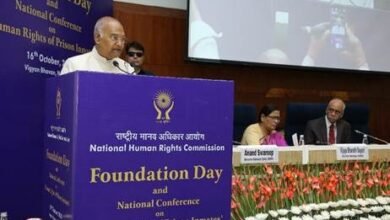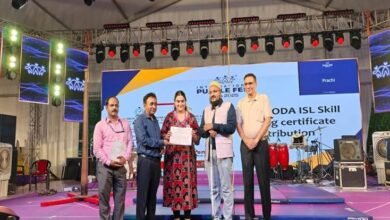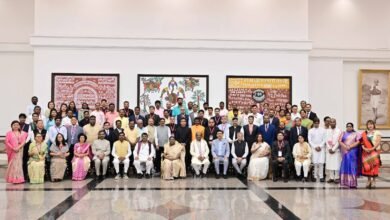President highlights lac farming role in boosting farmer income
By Doruvu Paul Jagan Babu:Bureau Chief
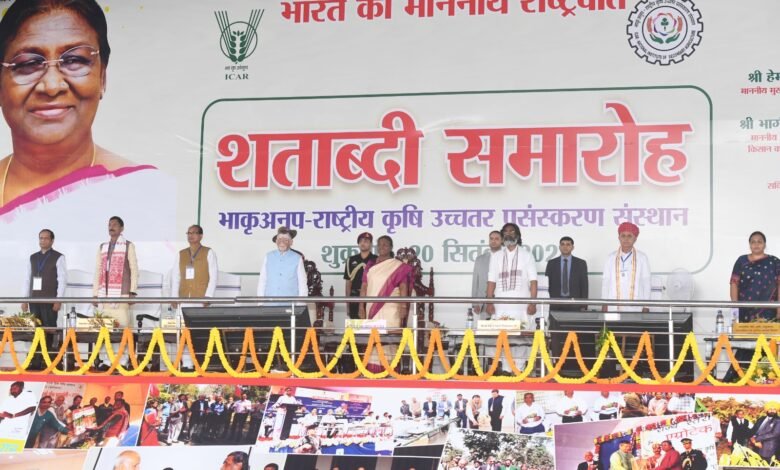
Ranchi – Jharkhand: President Droupadi Murmu emphasized the significance of secondary agriculture, particularly lac farming, in addressing key challenges like climate change, food security, and farmer income. Speaking at the centenary celebration of ICAR-NISA in Ranchi on Friday, she stressed the need for sustainable agricultural practices and innovations to uplift tribal communities and increase farmers’ earnings.

Challenges in agriculture: Food security and climate change
At the event, the President discussed the three major challenges facing agriculture in the 21st century: food and nutrition security, sustainable use of resources, and climate change. She emphasized that secondary agriculture — including activities like beekeeping, poultry farming, and agricultural tourism — can play a pivotal role in addressing these issues. Agricultural waste, for instance, can be processed into valuable products, benefiting the environment and boosting farmers’ income.
Lac farming: A lifeline for tribal communities
Lac production, largely undertaken by tribal communities, was highlighted as an essential source of income. The President acknowledged the research and commercial development efforts by the National Institute of Secondary Agriculture in developing lac-based products such as natural paints, varnishes, and fruit coatings. These advancements, she noted, would significantly improve the livelihoods of tribal farmers and meet the increasing demand for high-quality lac in industries like pharmaceuticals and cosmetics.
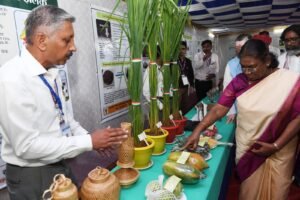
Diversifying farming to boost farmer earnings
Union Minister for Agriculture and Farmers’ Welfare, Shivraj Singh Chouhan, emphasized the need to diversify agriculture beyond traditional farming. He pointed out that lac farming holds immense potential, generating significant revenue for farmers and offering an eco-friendly alternative to plastic. Chouhan also highlighted Prime Minister Narendra Modi’s vision of doubling farmer income and reducing production costs through innovation and fair pricing.
Empowering women and enhancing farmer training
Chouhan welcomed the participation of women in the program, underscoring the importance of women empowerment in agriculture. He discussed the government’s Lakhpati Didi Yojana, which aims to ensure that every woman earns at least one lakh rupees annually. The minister pledged to expand training programs for lac farmers, increasing the number of trained farmers from 1,500 to 5,000 per year to help them increase production and income.
Government support for lac as an agricultural product
The Union Minister further announced plans to seek recognition for lac as an agricultural product, which would enable lac farmers to benefit from Agriculture Department schemes. He emphasized the need for cluster-based lac processing units to ensure fair prices for processed lac. Additionally, the Ministry of Tribal Affairs is expected to collaborate on setting a minimum support price (MSP) for lac, ensuring farmers receive at least 50 percent profit on their production costs.

Focus on making Ranchi a hub for agricultural research
Chouhan assured that Ranchi will be developed into a leading center for agricultural education and research, enhancing the region’s capabilities in secondary agriculture. This move, he said, would contribute to the government’s broader goal of making India a developed nation, as envisioned by Prime Minister Modi under the slogan “Jai Jawan, Jai Kisan, Jai Vigyan, Jai Anusandhan.”
Lac cultivation: A pathway to national development
Minister of State for Agriculture Bhagirath Choudhary stressed that lac farming is crucial for the prosperity of tribal communities in Jharkhand, Chhattisgarh, and Odisha. He emphasized that the nation’s development is tied to the well-being of its farmers, calling for protection from middlemen to ensure fair earnings. Lac farming, he reiterated, must be prioritized to improve the livelihoods of India’s agricultural workforce.







